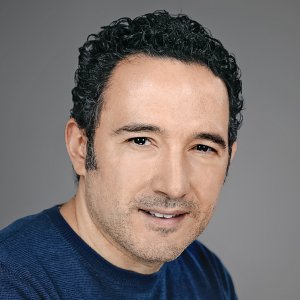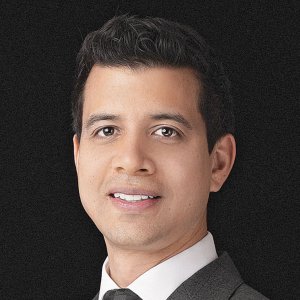‘Social Entrepreneurs’ Needed to Advance Healthcare

STORY INLINE POST
The free exercise of medicine is an important part of healthcare in our country. This occurs when an independent doctor attends to a patient who has chosen that doctor and it is based on trust. The classic image of the “freelance” doctor in his own practice faces various challenges, such as the direct doctor-patient relationship; however, it now depends on third-party entities that contract the physician, increasingly expensive medical technologies, bureaucratic difficulties and high costs of opening and maintaining consultations. All this is aggravated by little or no entrepreneurship training for the doctor.
According to the results of the National Survey of Occupation and Employment (ENOE), corresponding to the second quarter of 2021, Mexico has 305,418 doctors. Of every 100 people with this occupation, 67 are general practitioners and 33 are specialists in some other branch of medicine. By sector of activity, 98 percent of people employed as doctors work in the tertiary or service sector. Regarding the type of economic unit, of every 100 doctors, 68 work in institutions (mostly public), 29 for companies and three in the informal sector. Of the total number of people employed as doctors in the country, 33 percent work in large establishments, 28 percent in microbusinesses, 20 percent in medium-sized establishments, 17 percent in small economic units and 2 percent in other types of companies.
It is estimated that just over 71,286 doctors are in private practices, according to figures from the National Institute of Statistics (INEGI). In a country like ours, in which 60 percent of the population works in the informal economy and, as a consequence, does not have social security, this type of clinic contributes to reducing the burden on the public sector. The National Health and Nutrition Survey (Ensanut) of 2018 and 2019 estimated that at least 43 percent of medical consultations were provided by private practices. The most recent Ensanut detailed that independent medical offices offer 60.2 percent of the total consultations in the private sector, with offices that depend on pharmacies providing the remaining 39.5 percent. On their own, pharmacy-dependent offices serve 16.8 percent of all outpatient visits. When reviewing the figures of both studies, it is found that four out of 10 medical consultations in the country are in private services, either in hospitals or pharmacy offices. The number of outpatient consultations in private medical establishments in Mexico in 2019, according to the type of consultation, is led by specialty consultations with 6, 471,917 (46.0 percent), general consultations with 5,135,598 (36.5 percent), and emergencies at 2, 068,155 (14.7 percent). Those with the lowest demand are dental consultations with 257,760 (1.8 percent) and preventive medicine with 131,590 (1.0 percent).
A country like ours, with enormous unmet health needs, with insufficient but significant total expenditure, and which seeks universal coverage in primary medical care, requires a reform that allows the proper use of installed capacity, all available resources, including private, and in particular the large number of general practitioners in free exercise of the profession. In this sense, it is essential to have a disruptive and innovative vision that goes beyond the traditional approaches that have not been able to articulate this great resource for its use in a National Health Service that provides high-level and quality comprehensive medical care and in the short term.
The great challenge we face is that until now, this independent professional, sometimes due to his lack of entrepreneurial training, is at the mercy of third parties that impose their conditions and economic criteria in a false and precarious autonomy in various monopolies, including the state, insurers, private hospitals and chains of pharmacies that dictate working conditions.
Social Entrepreneur
A viable option is to develop the competence of a social entrepreneur. To this end, the Mexican association of faculties and schools of medicine developed the Profile by Competencies of the Mexican General Practitioner (Elsevier 2008), with the first competency being the domain of general medical care in which it is sought that the professional is able to provide a comprehensive clinical management that preserves or restores the health of the patient considering biological, psychological and social elements.
The social, epidemiological and technological transitions that affect the health sector demand substantial changes in the way future doctors are educated. During the last decades of the last century, the training requirements on the acquisition of professional competences were expanded. It is intended that new professionals can perform as agents of change in environments of uncertainty and in the face of clinical scenarios that have diversified and increased in complexity due to the regulations and conditions of the environment. These intentions, still decoupled between medical schools and health institutions, must be aligned to focus their attention on the most important actor: the patient.
Recently, Olivares and Valdez, with a group of collaborators, carried out through an editorial proposal a patient-centered learning model in which the health professional is educated according to four perspectives: human, biomedical, management and ,as a citizen of a social context, entrepreneurship. The latter is the perspective that allows the understanding of the context in which the individual is immersed with the possibility of extrapolating it to groups or populations seeking to understand the social determinants of health and extend the solutions for the achievement of a social transformation.
It is only through this transformation that the social enterprises can help to increase access to primary healthcare in low resource settings. These organizations are created to address social problems that use business models to sustain themselves financially.
Some common characteristics in the business models of primary healthcare social enterprises include flat rate rather and cross-subsidizing services and subscription packages. IT systems are utilized to generate revenue and increase reach through telemedicine, franchising and mobile units.
Social enterprise has been demonstrated as a feasible model for providing primary healthcare in low resource settings, with key characteristics differing from the previously commonly studied social enterprises in tertiary care. There are multiple and numerous opportunities to complement existing public health systems but most organizations face challenges in doing so. We need to develop an innovative and disruptive approach to the present and future healthcare challenges.








 By Jorge Valdéz | Dean -
Thu, 08/11/2022 - 16:00
By Jorge Valdéz | Dean -
Thu, 08/11/2022 - 16:00
















